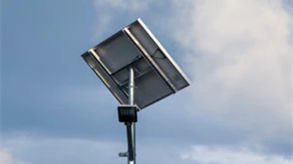Bollard lights stand as versatile and essential fixtures in outdoor lighting design, seamlessly blending functionality with aesthetics. From guiding pathways to enhancing security, these fixtures offer a myriad of benefits in various outdoor settings. In this comprehensive blog, we delve into the world of bollard lights, exploring their definition, applications, and lighting efficacy to shed light on their importance in outdoor illumination.
What are Bollard Lights?
Bollard lights, often referred to simply as bollards, are vertical fixtures typically installed outdoors to provide illumination and delineate pathways, driveways, and other outdoor areas. Resembling short posts or pillars, bollard lights come in a range of sizes, styles, and materials, allowing for customization to suit different architectural and landscaping designs. These fixtures are designed to withstand outdoor elements, ensuring longevity and durability in various environmental conditions.
Applications of Outdoor Bollard Lights
Outdoor bollard lights find widespread applications in diverse outdoor environments, including
1. Pathway Illumination
Outdoor bollard lights are commonly used to illuminate pathways, walkways, and sidewalks in residential, commercial, and public spaces. By lining pathways with bollard lights, property owners enhance safety and visibility for pedestrians, especially during nighttime or in poorly lit areas. Bollard lights strategically placed along paths ensure individuals can navigate safely, reducing the risk of tripping hazards and improving overall accessibility.
2. Landscape Enhancement
Bollard lights serve as essential fixtures for accentuating landscaping features and architectural elements in outdoor environments. These lights can be strategically positioned near trees, shrubs, flower beds, and other landscape elements to highlight their beauty and create captivating visual effects after dark. By illuminating key focal points, bollard lights enhance the aesthetics of outdoor spaces, adding depth and dimension to the landscape design.
3. Driveway Markers
Along driveways and vehicular pathways, bollard lights act as markers, guiding vehicles safely to and from parking areas or entry points. By delineating the edges of driveways, bollard lights help drivers maintain proper alignment and prevent accidental damage to landscaping or structures. Additionally, illuminated driveways enhance curb appeal and create a welcoming ambiance for visitors arriving at the property.
4. Outdoor Living Areas
Bollard lights extend the functionality of outdoor living areas such as patios, decks, and terraces by providing ambient illumination for evening gatherings and recreational activities. Placed strategically around seating areas or outdoor dining spaces, these lights contribute to a warm and inviting atmosphere, allowing occupants to enjoy outdoor living well into the evening hours. Bollard lights with adjustable brightness or dimming features offer flexibility to cater to different occasions and moods.
5. Safety and Security Lighting
In addition to enhancing aesthetics, outdoor bollard lights play a crucial role in enhancing safety and security around residential and commercial properties. Strategically positioned bollard lights illuminate entryways, doorsteps, and dark corners, deterring intruders and providing peace of mind for occupants. Motion-activated bollard lights offer an added layer of security by alerting homeowners to any movement around the property perimeter, helping to prevent unauthorized access and potential threats.
6. Public Spaces and Pathfinding
Bollard lights are commonly used in public spaces such as parks, plazas, and pedestrian walkways to guide visitors and enhance wayfinding. By installing bollard lights at regular intervals along pathways and public thoroughfares, municipalities and urban planners improve navigation for pedestrians, cyclists, and commuters, particularly in areas with heavy foot traffic or complex layouts. Well-lit pathways contribute to a sense of safety and accessibility, encouraging outdoor recreation and community engagement.

Lighting Efficacy of Bollard Lights
The lighting efficacy of bollard lights depends on several factors, including:
- Light Output: Bollard lights are available in varying brightness levels, typically measured in lumens. Higher lumen outputs ensure adequate illumination for different applications.
- Beam Angle: Bollard lights offer different beam angles, influencing the spread and direction of light. Narrow beam angles provide focused illumination, ideal for pathways, while wider angles cover larger areas such as gardens or driveways.
- Light Distribution: Well-designed bollard lights provide uniform light distribution, minimizing glare and ensuring comfortable illumination for pedestrians and motorists.
- Light Temperature: The color temperature of bollard lights affects the ambiance and visibility. Warm white tones create a cozy atmosphere, while cool white tones offer crisp visibility.
Conclusion
Outdoor bollard lights represent an indispensable element in outdoor lighting design, offering versatility, functionality, and aesthetic appeal. With their ability to illuminate pathways, enhance security, and accentuate outdoor landscapes, these fixtures play a vital role in creating inviting and safe outdoor environments. Understanding the applications and lighting efficacy of bollard lights enables homeowners, landscape designers, and property managers to make informed decisions when selecting and installing these fixtures in outdoor spaces.


































Leave a comment
This site is protected by hCaptcha and the hCaptcha Privacy Policy and Terms of Service apply.